Response to the Russian proposal
First published: 9/11 2010 - Last update: 1/2 2011
|
A response to the Russian proposal: by Henning Forbech Here are some comments to the Russian proposals in the document from the meeting in Novomoskovsk, Ukraine. Silencer outlet diameter:: Since the mandatory muffler first was introduced there has been a restriction on the diameter of the outlet opening. Together with the limitations on the volume and the length these rules have made it easy to check the silencers. Now we are trying to develop a set of rules for silencers for the future. This time we are focused on noise reduction and are going to test the performance of the silencers with an acoustic noise generator. We do not want tune pipes and a restriction on the length seems to be a simple way to block any development in this direction. There is also a debate on what the limit for the outlet hole should be. The Russians suggest 8 mm but other sizes have also been mentioned. But do we really need to have any restrictions on the outlet? If all silencers have to reduce the noise by e.g. 20 dB why should we then also have a restriction on the size of the outlet? Isn't this rule just a leftover from old days? The engine power is restricted by the 4 mm inlet. The only purpose of the silencer should be to reduce the noise. Let the size of the outlet be up to the designer to decide. As long as the silencer reduces the noise I see no need to make restrictions on the outlet. Will it actualy be a problem if somebody comes up with a silencer that actualy reduces the noise but also has a 12 mm outlet? If his engine dose not make more noise than allowed why should we then try to stop him from using it? A rule on the outlet hole will also force designers to only go for a single round outlet hole. If somebody develops an effective silencer with a lot of small outlet holes or a series of tiny slots he would not be able to use this design. The rule on the outlet diameter would not let him use anything else than a round hole. Many years back some engine manufactures started to produce mufflers with a diffuser. This diffuser not only enhanced the gas flow through the muffler but it also reduces the noise by one dB or so. The rulebook did only allow "simple chamber silencers" and after a short time we all had to cut of these diffusers. If in the future we set a maximum silencer outlet diameter we will also have to ban diffusers even if they could help us to reduce the noise. If anybody should get inspired by the muters used on brass instruments to design some kind of noise reducing cone for the outlet this design would also have to be banned. Let's keep the rules simple. No restriction on the outlet. |
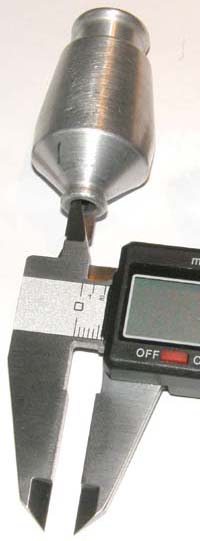
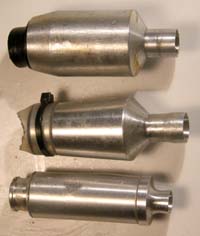 Different muffler with diffusers 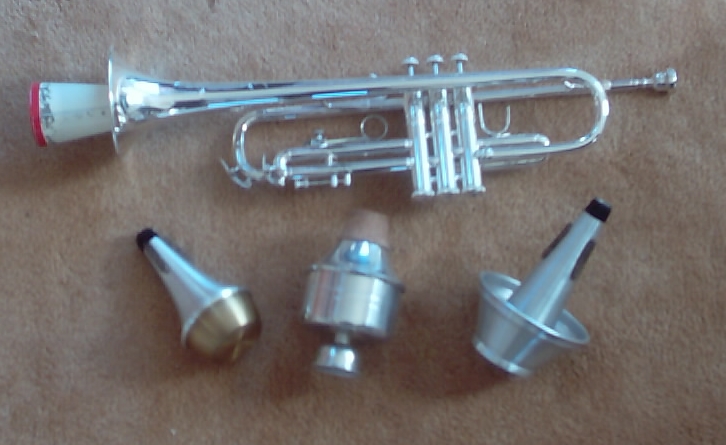
Trumpet with mutes |
|
|
Engine Speed: |
||
|
The engines used for F2D Combat today are optimized for high revolutions, typical 30,000 rpm or more.
If a maximum engine is set to 27,000 rpm all these engines will be running well below their potential power.
To get the most power from his engines the pilot must try to get his engine run as fast as possible but without breaking the rpm limit. To do this he must find the propeller with a combination of pitch and diameter that lets his engine run at maximum power as close to the rpm limit as possible. The size of the propeller will not only depend on the weather at the competition (temperature, air pressure, humidity, etc.) but will also be different for each engine. To find the right propeller he must try out different propellers at the flying field to be sure his choice is just right. More importantly he must make sure that his engines will not break the rpm limit. If pilots will start to make test runs on all engines right before each heat combat, competitions will be a real noisy for all involved. If the intention of the rule on engine speed was to reduce the noise level the practical result can easily be more time with engine noise than we have today. If a pilot can find a way to let his engine spin a little faster he will get a much higher power output from the engine. This will motivate pilots to find new ways to "optimize" their propellers. The propeller for the future shall not only be able to keep the engine below the rpm limit when it is running on the ground but it should also let the engine run at the highest possible rpm when the model is flying. At the flying test with the Super Silencer the engine changed from 28,300 rpm on the ground to 30,000 rpm in the air. This was a typical FORA engine with a 164 mm Seryogin propeller. If the propellers can be designed for a bigger difference between the rpm on the ground and the rpm in the air we will soon be back to a situation where the engines are running at high rpm in the air and making the same noise as today. Another side effect from a rule on engine speed at take off will be a lot of protests on pilots changing propeller during a heat. A pilot that lose a heat will claim that his opponent's pitman replaced a broken propeller with a propeller that lets the engine spin above the rpm limit when it was restarted in the heat. Since the propellers must be selected for each individual engine to optimize the rpm there will be a good chance that the pitman could have made this mistake. The judges can chose to let the pilot start his engine again to measure the engine speed. This will cost a lot of time and the pilot will not have any interest in demonstrating the highest possible engine speed in this situation. If the judges choose not to demand a test run in these situations pilots will soon start to take the risk of deliberately put on a propeller that let the engine spin too fast. If a pilot is not 100 % sure that his engine with a replaced propeller will be able to pass the rpm test in a restart after the heat we might choose to break the propeller by making a hard landing at the end of the heat. At first glance the engine speed rule seems to be an easy way to reduce the noise. If it should be introduced in the future it will give the pilots a lot of extra work to find the right combinations of engines and propellers. It will give a lot of extra test running during the competition and it will open up a Pandora's box of dirty tricks and protesting. |
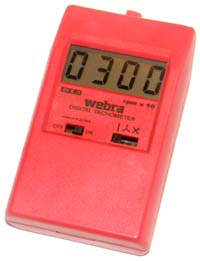 A classic optic tachometer 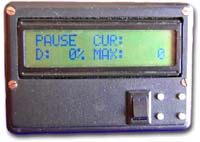 Acoustic Tachometer 
Engine speed in the air can be found by frequency analysis of a video recording |
|
|
Venturi size: The Russians also have a proposal for a bigger intake diameter. To compensate for the power loss in the silencer they would like to open the venturi to 7 mm. We can adjust the venturi diameter to keep the current engine power but I think 7 mm is far too much. 5 mm is probably a more realistic value but the final size must be set after some experiments with highly effective silencers. |
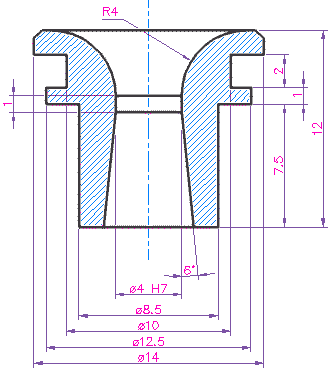
|
|
|
My opinion:
I am a member of the F2D Working Group and involved in making a proposal for 2013 noise rules. Just to prevent any confusion I must state that the views and conclusions on this web site are my private opinions. I can not and do not intend to speak on behalf of the Working Group. 9/11 2010 Henning Forbech Your opinion: You are welcome to comment on the content of this web site. Please use the debate forums for comments and proposals. Yahoo Groups: Combat-1 - CL Combat: F2D Noise Reduction Barton Model Flying Club: Combat / F2D Noise Reduction Russian Model Aircraft Sport Forum (FAS): F2D noise Google translate, Rule 2011 - Google translate |
||
|
F2D.dk < 1 2 3 4 5 6 7 8 9 10 11 12 13 14 15 16 > |
||